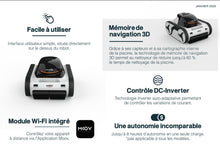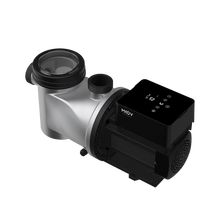When and how to analyze pool water?

When and how to analyze pool water?
Regularly testing your pool water is essential to maintaining healthy, clean, and enjoyable water. This helps prevent problems such as cloudy water, algae, and skin and eye irritation. Here's when and how to effectively test your pool water.
When to analyze pool water?
-
Weekly : Test water at least once a week to check disinfectant levels (chlorine or bromine), pH, and alkalinity.
-
After heavy rain or storms : Rainwater can change the chemical balance of your pool. Test the water after each heavy rain event to adjust levels.
-
After intensive use : If several people use the pool in one day (parties, meetings), the addition of substances such as sweat, cosmetic products, and organic waste can unbalance the water.
-
If there are visible problems : If you notice cloudy, green water, or eye and skin irritation, it is important to immediately analyze the water to identify imbalances.
-
Before and after winterizing : Test the water before closing the pool for the winter, and also before reopening in the spring to ensure it is ready for a new season.
How to analyze pool water?
-
Using a strip test kit:
- Simple to use, the test strips are dipped in water for a few seconds, then compared to a provided color chart to read the results.
- They typically measure pH , free chlorine , bromine , alkalinity , and sometimes stabilizer (cyanuric acid).
-
Using a liquid test kit:
- This type of test is a little more precise. You need to collect water in a tube and add a few drops of reagent. The color obtained will tell you the levels of chlorine, pH and other parameters.
- Test regularly to get an accurate view of your water's chemical status.
-
Electronic analysis (digital testers):
- Electronic devices quickly and accurately measure several parameters (pH, chlorine, etc.) using a probe immersed in water. They are more expensive, but offer instant and reliable results.
-
Have the water analyzed in store:
- For ultra-accurate results, you can bring a sample of your water to our store. They will perform a detailed analysis and provide you with a complete and free report.
What parameters should be monitored?
- pH : Ideally between 7.2 and 7.6 . A pH that is too high or too low can cause skin irritation and reduce the effectiveness of chlorine.
- Free Chlorine : Chlorine level must be maintained between 1 and 3 ppm to effectively disinfect water.
- Total Alkalinity : Between 80 and 120 ppm to avoid pH fluctuations.
- Stabilizer (cyanuric acid) : For chlorine-treated pools, the stabilizer should be between 30 and 50 ppm to avoid rapid degradation of chlorine under UV rays.
- Calcium hardness : Too low or too high a level can damage the pool coating. The ideal range is between 200 and 400 ppm .
Practical tips for a successful analysis:
- Sampling : Collect water approximately 30 cm below the surface to obtain a representative sample.
- Remote Nozzle Testing : Avoid sampling water near filtration nozzles or jets to avoid inaccurate results caused by excess disinfectant or poor water circulation.
- Ideal Conditions : Test water in the morning or late afternoon, and wait 4-8 hours after adding chemicals for accurate results.
By following a regular testing schedule and adjusting chemicals based on the results, you can ensure balanced, safe and enjoyable pool water throughout the season.










